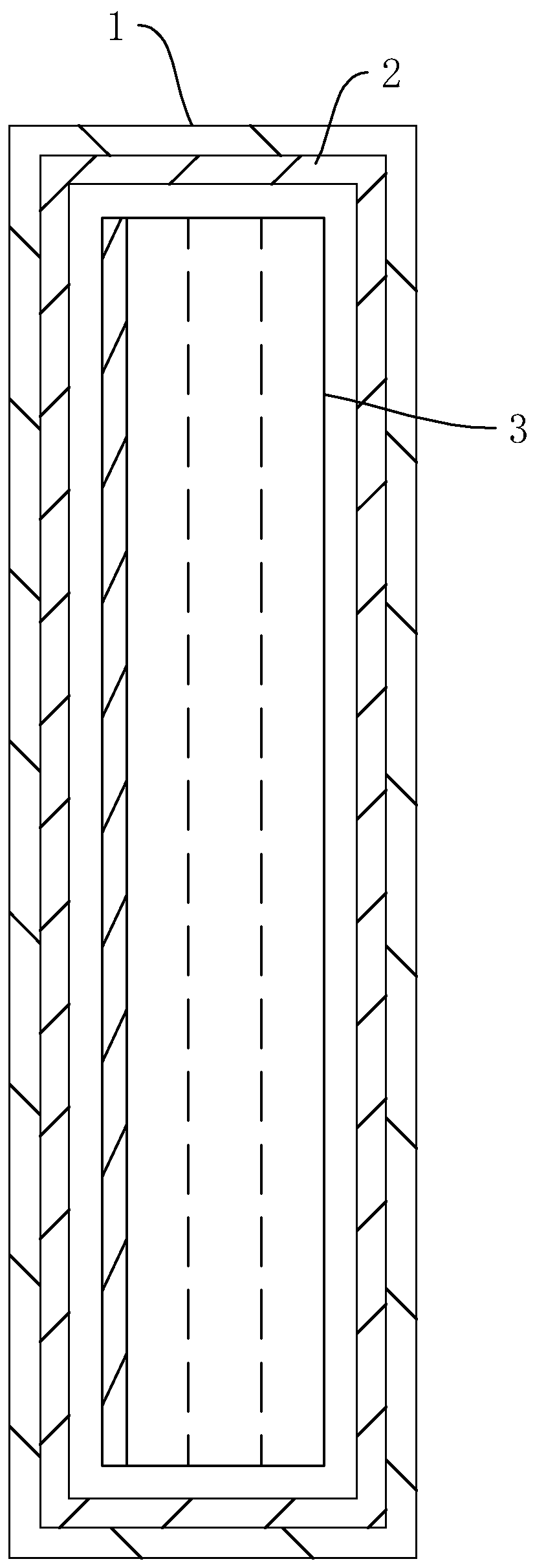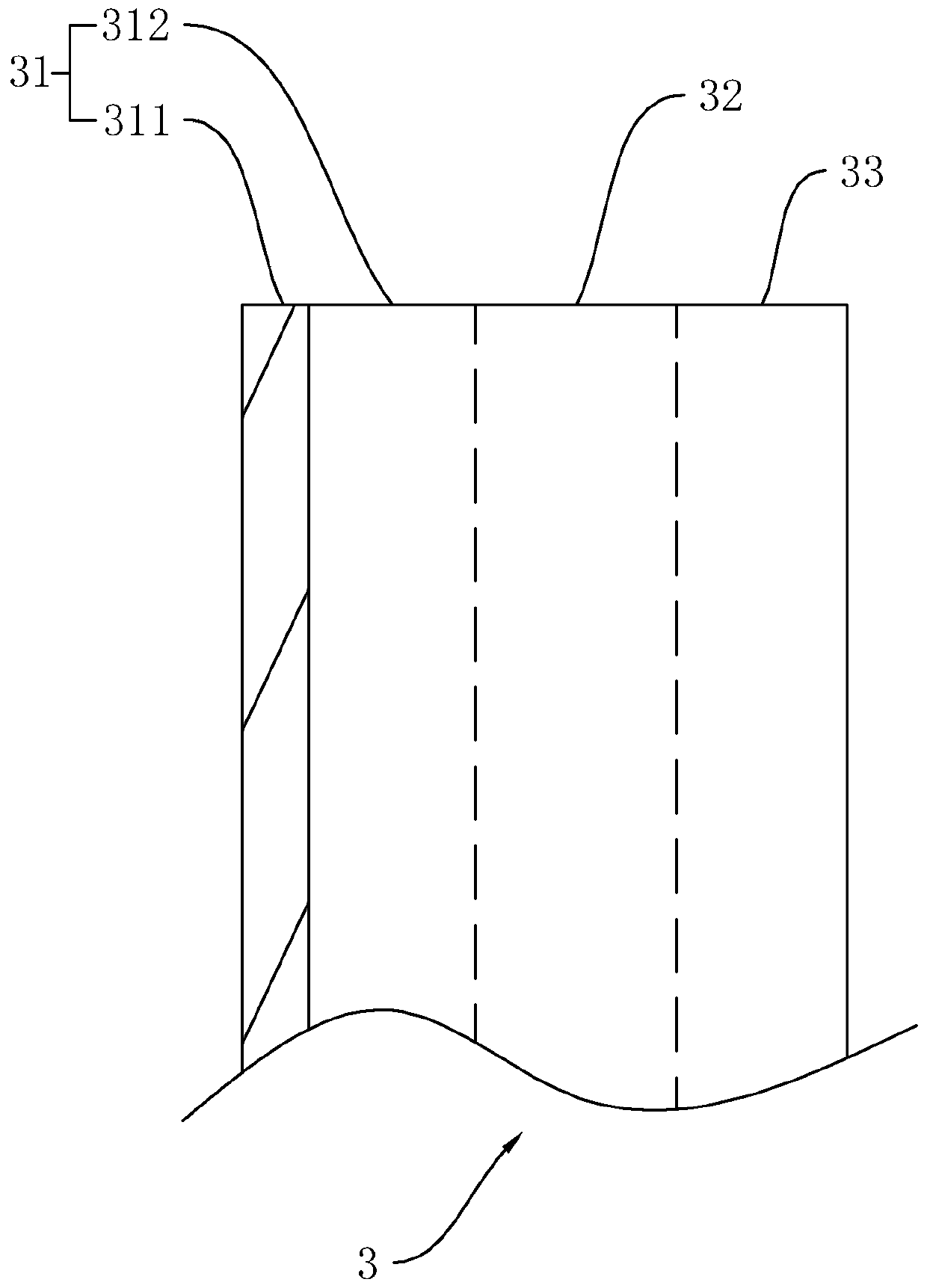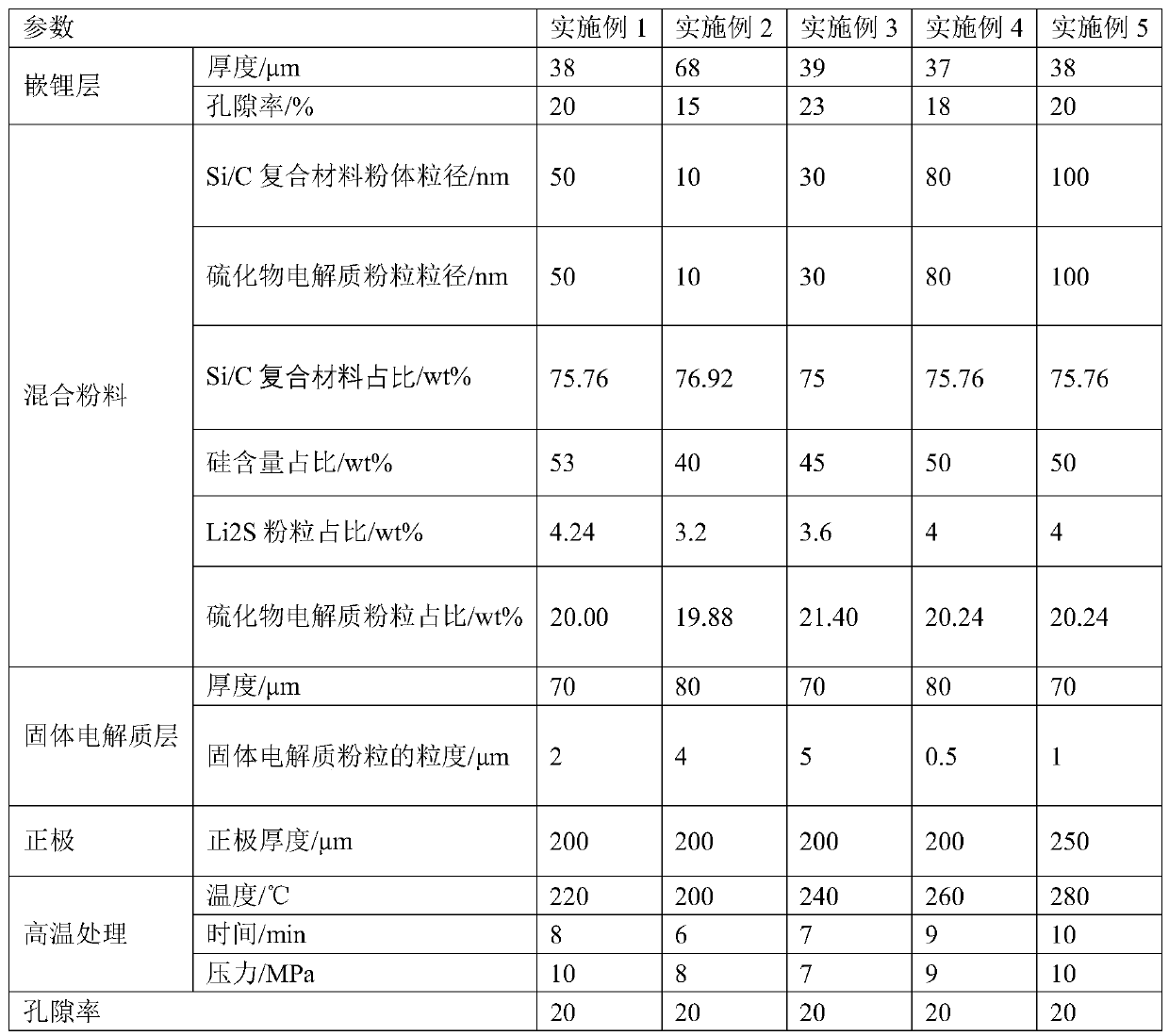All-solid-state battery with silicon negative electrode and sulfide solid electrolyte
A solid electrolyte, all-solid-state battery technology, applied in battery electrodes, secondary batteries, circuits, etc., can solve the problems of reducing battery energy density, SEI film thickness, and large lithium consumption of lithium-ion batteries, and improve electrical contact stability. improve the bonding tightness and reduce the effect of cracking and pulverization
- Summary
- Abstract
- Description
- Claims
- Application Information
AI Technical Summary
Problems solved by technology
Method used
Image
Examples
Embodiment 1
[0043] as attached figure 1 As shown, an all-solid-state battery with a silicon negative electrode and a sulfide solid electrolyte includes a casing 1 , an aluminum-plastic film 2 and a cell 3 . The battery cell 3 is covered with the aluminum-plastic film 2 and housed in the casing 1 . The shapes of the aluminum-plastic film 2 and the casing 1 can be determined according to the shape and size of the electric core 3 in the actual situation, which is not an inventive point of the present invention, so it will not be described in detail here.
[0044] as attached figure 2 As shown, the cell 3 includes a negative electrode 31 , a solid electrolyte layer 32 and a positive electrode 33 .
[0045] The negative electrode 31 includes a current collector 311 and a lithium intercalation layer 312 . The current collector 311 is a conductive material, which can be determined according to actual design requirements. Here, it is copper foil with a thickness of 8 μm.
[0046] The lithium...
Embodiment 2~4
[0062] An all-solid-state battery with a silicon negative electrode and a sulfide solid electrolyte. On the basis of Example 1, the parameters are adjusted to obtain Examples 2-5. The parameters of Examples 1-5 are shown in Table 1.
[0063]
Embodiment 5
[0088] Example 5 uses silicon-containing negative electrode material particles with a large size of 100 nm, and its initial discharge capacity and capacity retention rate are significantly inferior to those of Examples 1 to 4 that use small-sized silicon-containing negative electrode material particles. The preferred Si particle size of this application is 50 ~100 nm, and more preferably 50 nm.
[0089] Example 2 uses a very small amount of Li 2 S-coated electrolytes are used for lithium supplementation. Due to insufficient lithium supplementation, although the capacity retention rate is relatively excellent, its initial discharge capacity is low.
PUM
| Property | Measurement | Unit |
|---|---|---|
| Particle size | aaaaa | aaaaa |
| Granularity | aaaaa | aaaaa |
| Thickness | aaaaa | aaaaa |
Abstract
Description
Claims
Application Information
 Login to View More
Login to View More - R&D
- Intellectual Property
- Life Sciences
- Materials
- Tech Scout
- Unparalleled Data Quality
- Higher Quality Content
- 60% Fewer Hallucinations
Browse by: Latest US Patents, China's latest patents, Technical Efficacy Thesaurus, Application Domain, Technology Topic, Popular Technical Reports.
© 2025 PatSnap. All rights reserved.Legal|Privacy policy|Modern Slavery Act Transparency Statement|Sitemap|About US| Contact US: help@patsnap.com



